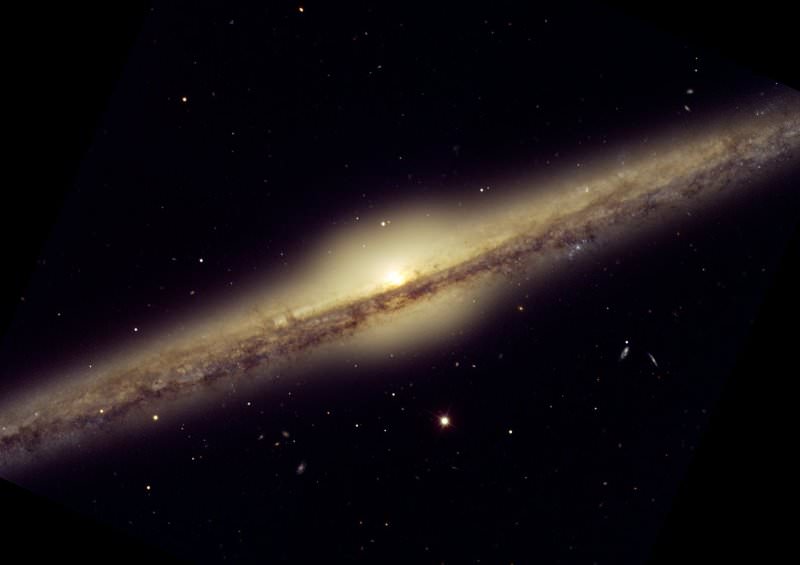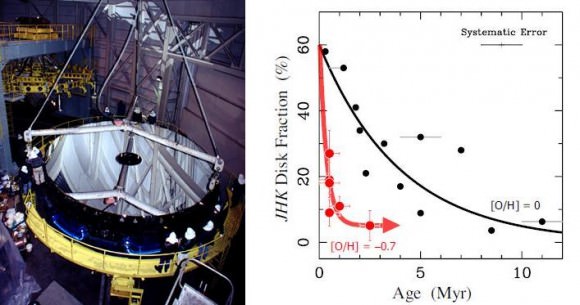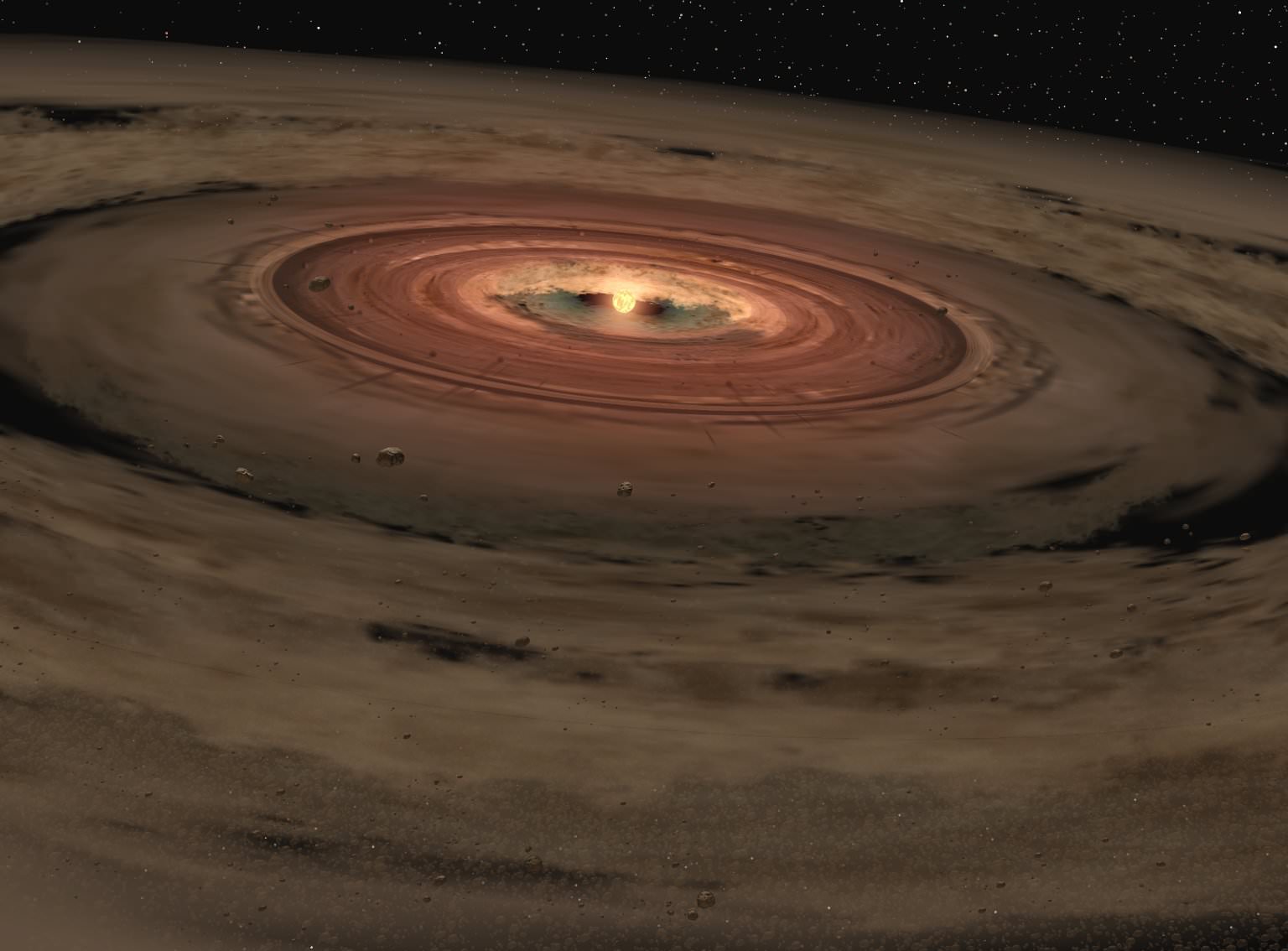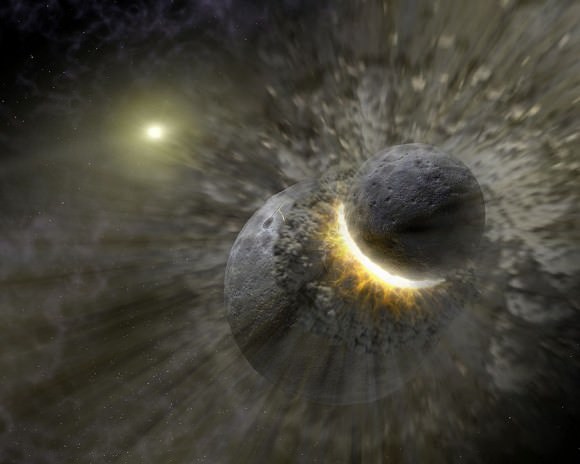[/caption]
Awhile ago I wrote on the difficulty of finding young planets. There, I mentioned one team announcing the potential discovery of a planet a mere 1-5 million years old. But what are astronomers to do if they want to find even younger planets?
The chief difficulty in this instance is that such planets would still be hidden in the circumstellar disks from which they formed, hiding them from direct observation. Additionally, depending on how far along the process had advanced, they may not yet have accreted sufficient mass to show up in radial velocity surveys, if such surveys could even been conducted with interference from the disc.
One way astronomers have proposed to detect forming planets is to observe their effects on the disc itself. This could come in a number of ways. One would be for the planet to carve out grooves in the disc, clearing its orbit as it sweeps up matter. Another possibility is to look for the “shadows” caused by the local overdensity an accreting planet would cause.
But recently, another new method caught my eye. In this one, proposed by astronomers at the Crimean National Observatory in the Ukraine, astronomers could potentially look for again turns to the characteristics of the parent star. Earlier, astronomers had made a link between the properties of the disc around classes of protostars (such as T Tauri and Herbig Ae stars) and the variable luminosity of the star itself.
The authors suggest that, “[t]wo different mechanisms can be involved in interpretation of these results: 1) circumstellar extinction and 2) accretion.” In either scenario, a body present in the disc itself concentrating the material would be necessary to explain these results. In the first case, a protoplanet would draw a swarm of material around it again creating a local overdensity in the disc which would be dragged around with the planet, creating a dimming of the star as it passed near the line of sight. In the second, the planet would draw out tidal structures in the disc in much the same way tidal interactions can draw out spiral structure in galaxies. As these veins of matter fall onto the star, it feeds the star, temporarily causing an outburst and increasing the brightness.
The team conducted an analysis of periodicity in several protostellar systems and found several instances in which the periods were similar to those of planetary systems discovered around mature stars. Around one star, V866 Sco, they discovered, “two distinct periods in light variations, 6.78 and 24.78 days, that persist over several years.” They note that the shorter period is likely “due to axial rotation of the star” but could not offer an explanation for the longer period which leaves it open to the possibility of being a forming planet and they suggest that spectral observations may be possible. Other systems the team analyzed had periods ranging from 25 – 120 days also hinting at the possibility for young planetary systems.
The advantage to this method is that finding candidate systems can be done relatively easily using photometric systems which can survey great numbers of stars at once whereas radial velocity measurements generally require dedicated observations on a single object. This would allow astronomers to discriminate against candidates unlikely to harbor forming planets. Ultimately, finding young systems with forming planets will help astronomers understand how these systems form and evolve and why our own system is so different than many others found thus far.





